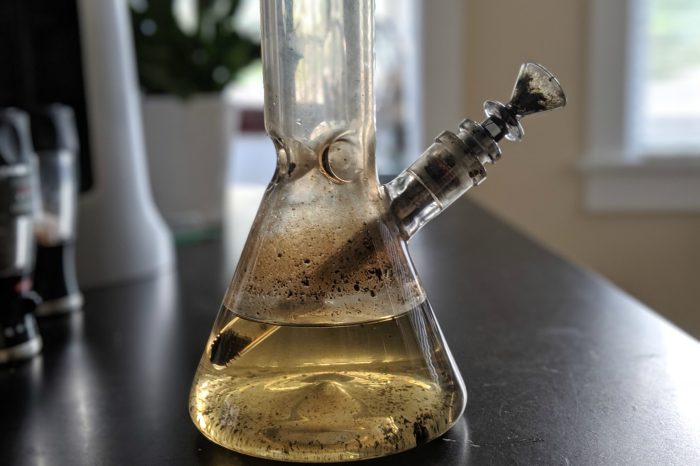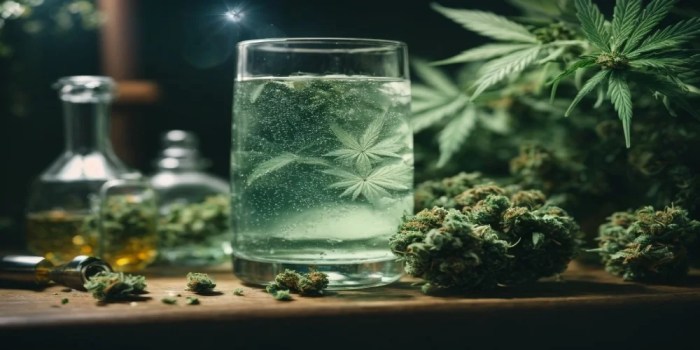Is Bong Water Good for Plants?
Bong Water and Plants: A Closer Look: Is Bong Water Good For Plants

Source: liwts.org
Is bong water good for plants – The idea of using bong water to irrigate plants might seem unconventional, even alarming. This article delves into the composition of bong water, exploring its potential benefits and risks for plant health. We will examine its chemical makeup, nutrient content, pH levels, microbial presence, and ultimately, whether it’s a viable—or advisable—alternative to clean water and proper fertilizers.
Bong Water Composition
Bong water is far from pure H₂O. Its composition varies significantly depending on the substance smoked and the frequency of use. Typical contaminants include remnants of the smoked material (e.g., tobacco, cannabis), along with byproducts of combustion such as tar, resin, and potentially pesticides (if present in the smoked material). The water also acts as a collection point for various organic compounds and microbes.
The chemical makeup of bong water differs drastically depending on the substance being smoked. For instance, bong water from cannabis use will contain cannabinoids and terpenes, while tobacco bong water will have nicotine and various tobacco-specific nitrosamines. The concentration of these compounds will also vary depending on the duration and intensity of smoking sessions.
Harmful substances like tar and resin are known irritants and can contain carcinogens. The presence of pesticides, if the smoked material was treated with them, further complicates the picture. These contaminants could negatively affect plant health, potentially leading to stunted growth or even plant death.
| Component | Clean Water | Bong Water (Cannabis) | Bong Water (Tobacco) |
|---|---|---|---|
| Water (H₂O) | 99.9+% | ~95-98% | ~90-95% |
| Organic Compounds | Trace | High (Cannabinoids, Terpenes) | High (Nicotine, TSNA) |
| Tar & Resin | Absent | Present | Present |
| Microbial Load | Low | High | High |
Nutrient Content and Plant Uptake, Is bong water good for plants
While bong water might contain trace amounts of minerals from the smoked material or tap water, these are unlikely to provide sufficient or balanced nutrition for healthy plant growth. Plants absorb nutrients through their roots, a process that requires specific mineral ions dissolved in water to be available in the soil at appropriate concentrations and pH levels.
Compared to balanced commercial fertilizers, bong water offers an unpredictable and potentially harmful nutrient profile. The concentrations of any present nutrients are likely to be inconsistent and far below the optimal levels needed for plant development. Furthermore, the presence of toxins outweighs any potential benefits from trace nutrients.
Nutrient toxicity is a significant concern. An excess of certain minerals, even if present in low amounts initially, could disrupt the plant’s ability to uptake other essential nutrients, resulting in nutrient deficiencies and stunted growth. The presence of toxic compounds further exacerbates this risk.
pH Levels and Soil Impact

Source: apepremium.com
The pH of bong water is typically slightly acidic to neutral, though this can vary. Soil pH significantly impacts nutrient availability. Many essential nutrients are most readily available to plants within a specific pH range. An unsuitable pH can lead to nutrient deficiencies, even if the nutrients are present in the soil.
The pH of bong water, while not drastically different from many soils, could still contribute to imbalances over time. Repeated watering with bong water might gradually alter the soil’s pH, potentially affecting the availability of crucial nutrients. For example, iron and phosphorus uptake can be reduced in highly alkaline soils.
Different pH levels have diverse impacts on plant growth. For instance, acidic conditions can hinder the uptake of calcium and magnesium, leading to chlorosis (yellowing of leaves), while alkaline conditions can limit the availability of iron and manganese, resulting in stunted growth and reduced yield.
Microbial Content and Disease

Source: redd.it
Bong water harbors a high concentration of microorganisms, some of which could be pathogenic (disease-causing). The risk of introducing plant diseases through the use of bong water is significant. These microbes could infect the plant’s roots, leading to root rot or other diseases.
Compared to other potential sources of plant contamination, such as contaminated soil or infected plant material, bong water presents a concentrated risk. The presence of numerous microbes, including potentially pathogenic ones, makes it a far riskier watering option than clean water.
A hypothetical experiment to investigate the effect of bong water on plant disease susceptibility could involve comparing the growth and health of plants watered with bong water to those watered with clean water, while inoculating both groups with a known plant pathogen. The experiment would monitor disease incidence and severity in both groups to determine if bong water increases susceptibility to plant diseases.
Practical Application and Alternatives
Using bong water for plants carries numerous risks. These include the introduction of harmful chemicals, unbalanced nutrients, potentially pathogenic microbes, and alterations in soil pH. The potential negative consequences far outweigh any perceived benefits.
While bong water isn’t ideal for plants due to its contaminants, understanding the role of water in plant health is crucial. The process of photosynthesis, explained in detail at how is water related to oxygen in plants , highlights water’s vital role in oxygen production. Therefore, providing plants with clean, pure water is far superior to using potentially harmful bong water, ensuring optimal growth and health.
- Introduction of harmful chemicals (tar, resin, pesticides).
- Imbalanced nutrient supply.
- Increased risk of plant diseases.
- Soil pH disruption.
Safer and more effective watering methods involve using clean water and appropriate fertilizers. Clean water ensures the plant receives the essential hydration without introducing harmful contaminants. Balanced fertilizers provide the necessary nutrients in the correct proportions for optimal growth.
A visual comparison: A healthy plant watered with clean water and appropriate fertilizer would exhibit vibrant green foliage, strong stems, and vigorous growth. In contrast, a plant watered with bong water might show signs of stunted growth, yellowing leaves (chlorosis), and possibly wilting or even death due to root rot or other diseases. The plant watered with bong water would likely have a sickly appearance, with potentially visible signs of disease.
Expert Answers
Can bong water provide any micronutrients to plants?
While some trace minerals might be present, the quantities are unpredictable and unreliable, and far outweighed by the risks of contaminants.
Is it safe to use bong water on outdoor plants?
No. The risks of disease and contamination are the same, regardless of the plant’s location.
What are the long-term effects of using bong water on plants?
Long-term use could lead to stunted growth, disease, and even plant death due to nutrient imbalances and the presence of harmful substances.
Could filtering bong water make it safe for plants?
Filtering may reduce some contaminants, but it cannot eliminate all harmful substances or guarantee a safe pH level. The process is also not practical or cost-effective.




















